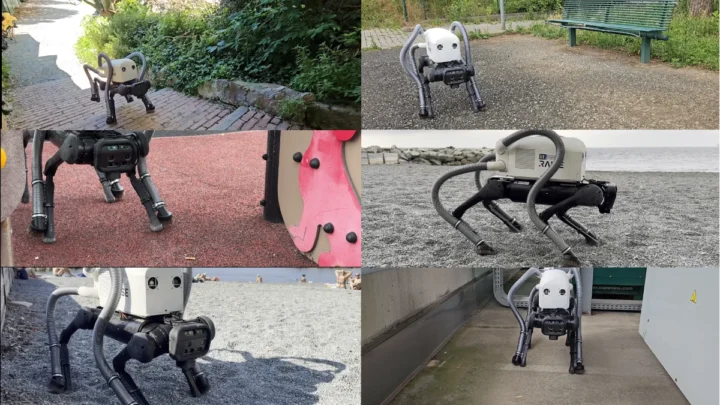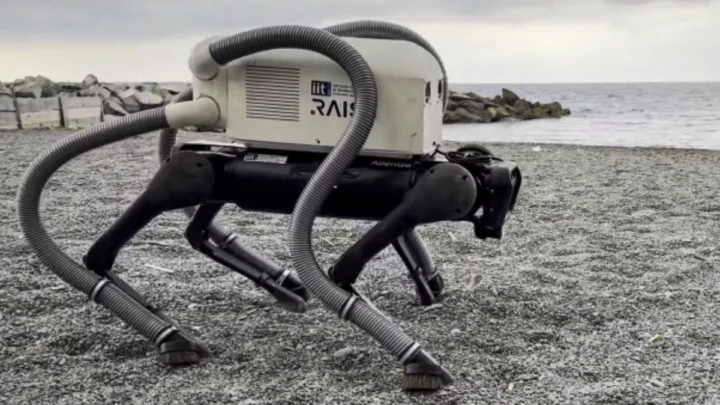Cigarette butts are the second most common type of litter on Earth – of the estimated six billion cigarettes inhaled every year, estimate-it-is that over 4 billion cigarette butts are simply thrown on the ground. Each of these cigarette butts releases over 700 different toxic chemicals into the environment. If humans don’t take care of the environment, will robots have to? Meet VERO… which cleans the beaches!
Humans who leave cigarette butts on the ground are not very clean.
Yes, it is a fact that a cigarette butt left on the ground contaminates the environment. As mentioned, this cigarette butt releases over 700 toxic chemicals. We cannot forget, however, that all these toxic chemicals also end up in people's lungs. But more than that, there is the damage they cause to the ecosystem and also to the landscape where they are dumped; it is just discarded trash that someone will have to clean up.
Obviously, preventing cigarette butts from ending up on the floor would be the best option, but this would require a major change in human behavior. Assuming that humans cannot change their behavior, robots could help.

VERO, the robot dog that vacuums other people's trash
Engineers at the Dynamic Leg Systems unit at the Italian Institute of Technology (IIT) in Genoa have designed a new platform for cleaning cigarette butts, in the form of a quadrupedal robot with vacuum cleaners attached to its feet.
There are, of course, much more efficient ways to at least partially automate waste cleaning with machines. The challenge is that most of this automation relies on wheeled mobility systems, which do not work on Genoa’s many beautiful beaches (and many beautiful flights of stairs). In places like these, humans are still doing the heavy lifting, which is not ideal.
This robot, developed in Claudio Semini's lab at IIT, is called VERO (Vacuum-cleaner Equipped RObot). It is based on a Unitree AlienGo, with a commercial vacuum cleaner mounted on its back.

Hoses run from the vacuum down the leg to each foot, with a custom 3D-printed nozzle that puts as much suction close to the floor as possible without tripping the robot. While the vacuum is a novelty, the real contribution here is the way the robot autonomously locates things on the floor and then plans how to interact with these things using your feet.
First, an operator designates an area for VERO to clean, after which the robot works on its own. After calculating an exploration path to explore the entire area, the robot uses its onboard cameras and a neural network to detect cigarette butts.
This It's more complicated than it seems, because there may be a lot of cigarette butts on the floor and they probably all look the same, so the system has to filter out all potential duplicates.

The next step is to plan your next steps: VERO has to place the vacuum side of one of your feet right next to each butt, while calculating a safe and stable pose for the rest of your body.
Since this entire process can take place on sand, stairs or other uneven surfaces, VERO has to prioritize not falling over before deciding how to collect.
The final maneuver of collection is fine-tuned using an Intel RealSense depth camera extra mounted on the robot's chin.
Robot has an accuracy of close to 90%
Initial tests with the robot in a variety of different environments showed that it was able to successfully collect about 90% of cigarette butts. The robot is not very fast at the task, but unlike a human, it will never get tired as long as it has battery power, so speed is a little less important.
The researchers suggest a variety of other potential use cases, including spraying weeds in crop fields, inspecting cracks in infrastructure, and placing nails and rivets during construction.
Some use cases include the ability to do multiple things at once, such as plant different types of seeds, use different surface sensors or place nails and rivets.
And since quadrupeds have four feet, they can potentially house four completely different tools, and the software the researchers developed for VERO can be modified slightly to put whichever foot we want where we need it.
Source: pplware.sapo.pt


